Themed collection Most downloaded articles of 2017: Inorganic and Materials Chemistry

Hydrogen-bonded rosettes comprising π-conjugated systems as building blocks for functional one-dimensional assemblies
One-dimensional nanoassemblies obtained by the columnar stacking of hydrogen-bonded supermacrocycles (rosettes) comprising π-conjugated molecules.
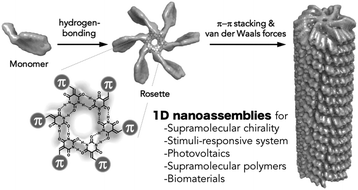
Chem. Commun., 2017,53, 9663-9683
https://doi.org/10.1039/C7CC04172A
Integrative self-sorting of coordination cages based on ‘naked’ metal ions
In this review, we highlight recent approaches that facilitate integrative self-sorting of ’naked’ metal ions and ligands to form multi-component, heteroleptic cage structures.
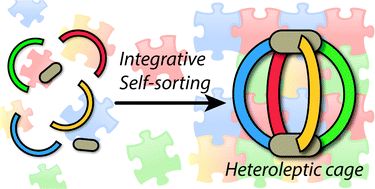
Chem. Commun., 2017,53, 8506-8516
https://doi.org/10.1039/C7CC03379F
Coordination nanosheets (CONASHs): strategies, structures and functions
The present feature article assembles recent rapid progress in the coordination nanosheet (CONASH), the interest of which traverses from basic to materials science.
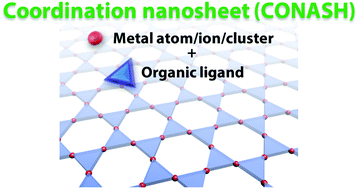
Chem. Commun., 2017,53, 5781-5801
https://doi.org/10.1039/C7CC00810D
Light-responsive molecular containers
This review highlights relevant studies of light-controlled molecular containers able to catch and release small molecules.
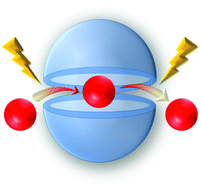
Chem. Commun., 2017,53, 4635-4652
https://doi.org/10.1039/C7CC01568B
Solution processing of two-dimensional black phosphorus
This feature article discusses solution-phase routes to semiconducting two-dimensional black phosphorus (‘phosphorene’) and highlights challenges in processing the material as well as illuminating new avenues and opportunities in the area.

Chem. Commun., 2017,53, 1445-1458
https://doi.org/10.1039/C6CC09658A
Alternative synthetic approaches for metal–organic frameworks: transformation from solid matters
This review summarizes alternative approaches for MOF synthesis by using solvent-insoluble “solid matters” as cation reservoirs and/or templates.

Chem. Commun., 2017,53, 72-81
https://doi.org/10.1039/C6CC07094A
Facile synthesis of –C![[double bond, length as m-dash]](https://www.rsc.org/images/entities/char_e001.gif) N– linked covalent organic frameworks under ambient conditions
N– linked covalent organic frameworks under ambient conditions
We demonstrate a facile approach for the synthesis of –C![[double bond, length as m-dash]](https://www.rsc.org/images/entities/char_e001.gif) N– linked covalent organic frameworks under ambient conditions.
N– linked covalent organic frameworks under ambient conditions.
![Graphical abstract: Facile synthesis of –C [[double bond, length as m-dash]] N– linked covalent organic frameworks under ambient conditions](/en/Image/Get?imageInfo.ImageType=GA&imageInfo.ImageIdentifier.ManuscriptID=C7CC05779B&imageInfo.ImageIdentifier.Year=2017)
Chem. Commun., 2017,53, 11956-11959
https://doi.org/10.1039/C7CC05779B
A backbone design principle for covalent organic frameworks: the impact of weakly interacting units on CO2 adsorption
Integration of a building block that interacts only weakly with CO2 to the backbone of covalent organic frameworks reveals profound collective effects on facilitating CO2 uptake and separation.
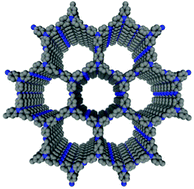
Chem. Commun., 2017,53, 4242-4245
https://doi.org/10.1039/C7CC01921A
A triptycene-based porous hydrogen-bonded organic framework for guest incorporation with tailored fitting
By employing a robust and non-coplanar building block strategy, a triptycene-based hydrogen-bonded organic framework was constructed with almost no sacrifice of molecular surfaces, and it was capable of incorporating C60 molecules in high concentration in the channels with tailored fitting.
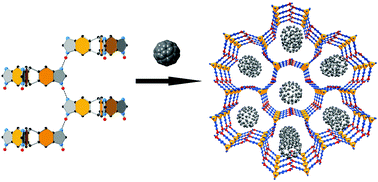
Chem. Commun., 2017,53, 3677-3680
https://doi.org/10.1039/C7CC00557A
A highly porous metal–organic framework for large organic molecule capture and chromatographic separation
A highly porous metal–organic framework with large pores presents large molecule based applications probed by organic dye molecules.
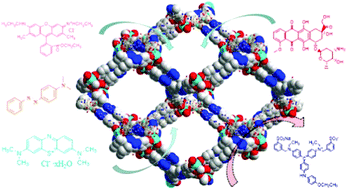
Chem. Commun., 2017,53, 3434-3437
https://doi.org/10.1039/C7CC01063J
Hierarchical structure and porosity in UiO-66 polyMOFs
The first polymer–MOF hybrid material (polyMOF) with a UiO-66 architecture is reported, prepared from polymers with varying alkyl spacers, molecular weights, and dispersities.

Chem. Commun., 2017,53, 3058-3061
https://doi.org/10.1039/C6CC10225E
Construction of 2D covalent organic frameworks by taking advantage of the variable orientation of imine bonds
A model has been established to construct covalent organic frameworks (COFs) by taking advantage of the variable orientation of imine bonds, from which an unprecedented heterodromous orientation of C![[double bond, length as m-dash]](https://www.rsc.org/images/entities/char_e001.gif) N linkages in the COFs was observed.
N linkages in the COFs was observed.

Chem. Commun., 2017,53, 2431-2434
https://doi.org/10.1039/C6CC09906H
Colloidal atomic layer deposition growth of PbS/CdS core/shell quantum dots
We show here a self-limiting layer-by-layer growth of a CdS shell on PbS cores.
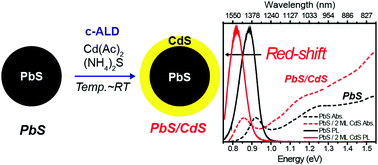
Chem. Commun., 2017,53, 869-872
https://doi.org/10.1039/C6CC07403K
Stabilizing the cubic perovskite phase of CsPbI3 nanocrystals by using an alkyl phosphinic acid
Phase-stable perovskite CsPbI3 nanocrystals have been prepared by replacing conventionally used oleic acid with a phosphinic acid in their synthesis.
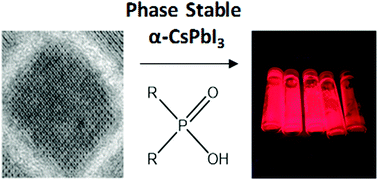
Chem. Commun., 2017,53, 232-235
https://doi.org/10.1039/C6CC08282C